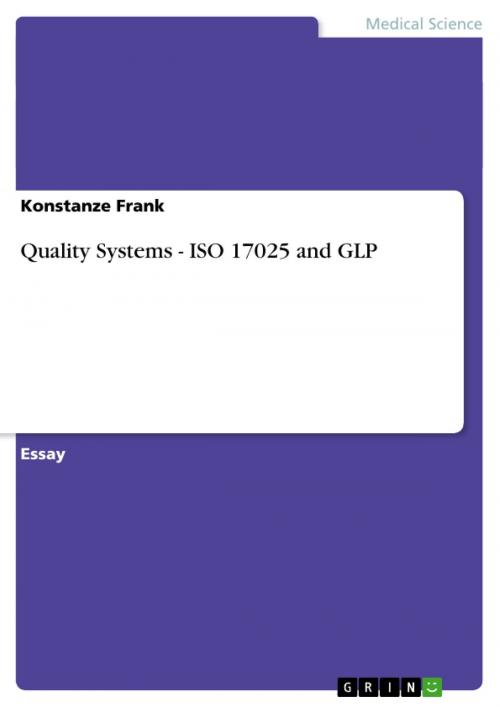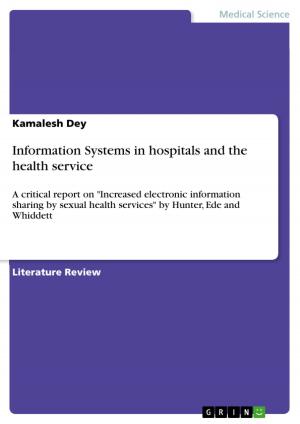Quality Systems - ISO 17025 and GLP
ISO 17025 and GLP
Nonfiction, Health & Well Being, Medical, Specialties, Clinical Medicine| Author: | Konstanze Frank | ISBN: | 9783638394819 |
| Publisher: | GRIN Publishing | Publication: | July 10, 2005 |
| Imprint: | GRIN Publishing | Language: | English |
| Author: | Konstanze Frank |
| ISBN: | 9783638394819 |
| Publisher: | GRIN Publishing |
| Publication: | July 10, 2005 |
| Imprint: | GRIN Publishing |
| Language: | English |
Essay from the year 2004 in the subject Medicine - Hospital Environment, Clinical Medicine, grade: good, Anglia Ruskin University, 7 entries in the bibliography, language: English, abstract: An accredited laboratory according to ISO/IEC 17025 and a research facility working according to the Organisation for Economic Co-operation and Development Good Laboratory Practice (OECD GLP) series of principles, both facilities perform chemical, analytical and microbiological tests. The main difference is the types of projects that the laboratories deal with. OECD GLP facilities conduct studies for the purpose of testing and assessing chemicals to determine their potential hazards. The GLP principles are a managing tool covering the organisational process and the conditions under which laboratory studies are planned, performed, monitored, recorded and reported. Whereas accredited laboratories are testing and calibration laboratories. They operate a quality system, are technically and scientifically competent, and are able to generate technically valid and traceable results. There are many definitions of Quality. One possibility might be to define quality 'in terms of customer satisfaction'. As there is no absolute measure hence it should be 'management's task to translate future needs of customers into quality products and services]. Therefore a 'quality system' can assist organisations in enhancing customers' satisfaction. According to Andrew Waddell there are two dimensions of a quality system, a vertical and a horizontal dimension. The requirements of the vertical, i.e. technical, level are covered by ISO 17025 whereas the horizontal, i.e. managing and organisational, concept is detailed in the OECD GLP principles. However, a comparison of both shows overlapping and/or common requirements in these international standards with unique occurrence in the two of them.
Essay from the year 2004 in the subject Medicine - Hospital Environment, Clinical Medicine, grade: good, Anglia Ruskin University, 7 entries in the bibliography, language: English, abstract: An accredited laboratory according to ISO/IEC 17025 and a research facility working according to the Organisation for Economic Co-operation and Development Good Laboratory Practice (OECD GLP) series of principles, both facilities perform chemical, analytical and microbiological tests. The main difference is the types of projects that the laboratories deal with. OECD GLP facilities conduct studies for the purpose of testing and assessing chemicals to determine their potential hazards. The GLP principles are a managing tool covering the organisational process and the conditions under which laboratory studies are planned, performed, monitored, recorded and reported. Whereas accredited laboratories are testing and calibration laboratories. They operate a quality system, are technically and scientifically competent, and are able to generate technically valid and traceable results. There are many definitions of Quality. One possibility might be to define quality 'in terms of customer satisfaction'. As there is no absolute measure hence it should be 'management's task to translate future needs of customers into quality products and services]. Therefore a 'quality system' can assist organisations in enhancing customers' satisfaction. According to Andrew Waddell there are two dimensions of a quality system, a vertical and a horizontal dimension. The requirements of the vertical, i.e. technical, level are covered by ISO 17025 whereas the horizontal, i.e. managing and organisational, concept is detailed in the OECD GLP principles. However, a comparison of both shows overlapping and/or common requirements in these international standards with unique occurrence in the two of them.















